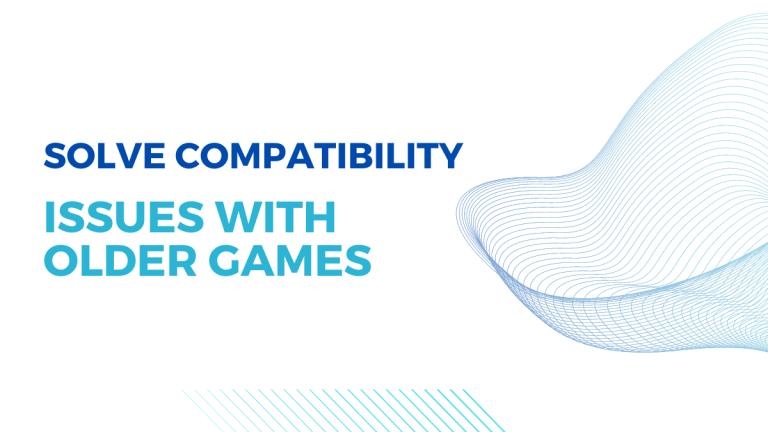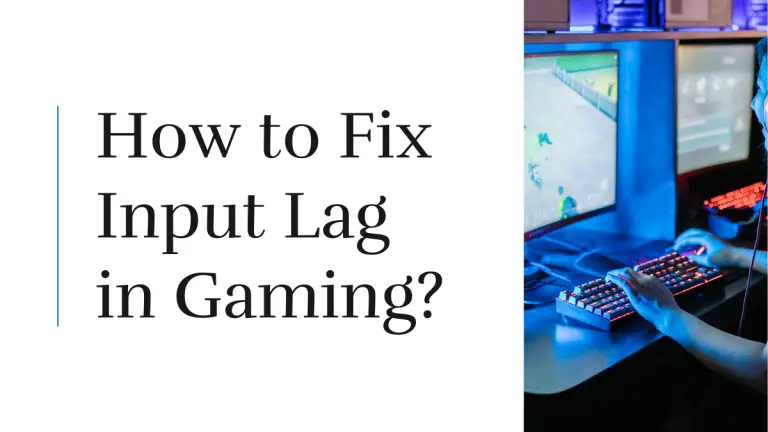How to Troubleshoot Network Connectivity Issues in Online Gaming?
Are you tired of experiencing frustrating network issues while gaming? Is your multiplayer experience plagued with lag, disconnected sessions, or slow download speeds? Fret not, fellow gamers! We’ve got you covered.
In this ultimate troubleshooting guide, we’ll dive into the world of network gaming woes and provide you with effective solutions to make those problems a thing of the past. Say goodbye to endless frustration and hello to uninterrupted gaming bliss!
What are Network Connectivity Issues?
There are few things more frustrating than experiencing problems with your network gaming. Whether you’re struggling to connect to a game server or getting kicked out of a match because of lag, you can do plenty to troubleshoot and fix networking issues.
Here’s a guide on how to diagnose and fix common network gaming issues:
- Check your router settings. Ensure your router is set up correctly and all devices on your network are connected to the same router. Also, make sure that the IP addresses assigned to each device are correct.
- Test your internet connection. If you’re having trouble connecting to a game server, first try testing your internet connection by downloading and running a diagnostic tool like SpeedTest from www.speedtest.net/. If the problem still persists, try connecting directly to the game server using a VPN or proxy service.
- Check for corrupted files or folders – On your computer or external hard drive. If you’re having trouble connecting to a game server, it’s possible that some files or folders on your computer have become corrupted and are preventing you from joining the game. Try checking these files and folders yourself using an antivirus program or another file-scanning utility like FileZilla (www.filezilla-project.org).
- Resetting your computer’s network settings may help solve certain networking problems. To reset your computer’s network settings, open Control Panel > Network Connections.
Causes of Network Connectivity Issues
There are a few potential causes of network connectivity issues in gaming. If your computer does not recognise any devices in your network, it may be due to a problem with the wireless card. Old firmware or driver, incorrect settings, or interference from other electronics in your home can cause this. If you’re experiencing constant disconnects and low ping times, it may be time to take your computer to a professional for diagnosis.
If you’ve tried all of the troubleshooting tips below and still have trouble connecting to the game server or other players, it’s likely that there is a problem with your network connection itself. Check the following:
- Make sure that you have the latest drivers for your hardware and software.
- Make sure that all of your cables are plugged in correctly and that there is no interference from other equipment in your home.
- Try rebooting both your computer and the game server. Sometimes problems can arise when one device tries to access an existing resource on another. Rebooting can sometimes clear up these issues.
Checking Your Internet Connection
If you’re experiencing problems with your computer’s network gaming capabilities, there are a few things you can do to troubleshoot the issue.
- First, ensure that your computer is connected to the internet and that the network settings on your computer are configured correctly. If you’re using a wired connection, ensure the cable is plugged in properly and not twisted or kinked. If you’re using a wireless connection, ensure your router is working properly and that it’s not blocking any traffic from reaching your computer.
- Next, try closing any programs running in the background on your computer and restarting your computer. Try installing new drivers for your network card if available.
Assessing Router and Modem Settings
If you’re having problems playing network games, there’s a good chance that your router and modem are not set up correctly. In this article, we’ll show you how to assess your settings and how to troubleshoot common networking issues if they persist.
Before we start, it’s important to understand the difference between a router and a modem. A router is responsible for connecting devices in your home network, while a modem connects your computer and the internet.
To test your connectivity, try launching a game directly on your computer. If you’re able to connect to the game servers without any problems, then your router is likely configured correctly. However, if you experience any lag or choppy performance when trying to connect, then it’s time to check your modem settings.
Most modems come with online tutorials or help menus that can guide you through basic configuration tasks like setting up port forwarding and DNS resolution. If you’re still having trouble connecting, be sure to consult these guides for more specific troubleshooting advice. Here are some of the most common problems that can prevent gamers from enjoying their multiplayer experiences:
Lack of bandwidth: Many gamers experience difficulty connecting when their home networks are overloaded with data traffic. To diagnose this issue, you can use an online bandwidth testing tool like Speedtest.net to measure your download speeds and upload speeds. If you’re experiencing slower-than-average speeds even when there isn’t too much activity on the network
Troubleshooting Network Hardware
If you’re having trouble with your network gaming, chances are you’re not alone. Whether you’re experiencing lag or lost connections, there’s a good chance that your hardware is to blame. Here’s how to troubleshoot network hardware issues so you can get back into the game.
First and foremost, make sure that your computer is actually connected to the network. If it isn’t, try Reconnecting Now in your network settings. Next, check for any errors or problems with your network connection. If you’re still having trouble, try these solutions:
- Verify Your Network Adapter: Make sure that your network adapter is properly configured and up-to-date. Go to Start > Control Panel > System and Security > Network adapters and view the properties of the adapter (right-click on it to get more options). Ensure that the driver is installed and up-to-date, as well as any firmware updates if applicable.
- Reset Your Adapter: Sometimes resetting your adapter will resolve common networking issues. Follow these steps:
- Disconnect from the Internet
- Unplug all cables from your computer.
- Wait five minutes
- Plug in one end of an Ethernet cable to an outlet on your computer and plug in the other end to a functioning router.
- Power on the computer. The adapter should now be able to connect to the router.
- Reconnect to the Internet
- Reset Your Router: If resetting your adapter.
Addressing Firewall and Antivirus Settings
If you’re experiencing problems with your network gaming, there are a few things you can do to troubleshoot and fix the issue.
- First, make sure that your firewall is properly configured and up-to-date. If you’re using a personal firewall on your computer, ensure it’s enabled and that all the ports required for your game are open.
- Second, ensure you have the latest antivirus software installed on your computer. Antivirus software can help to protect your computer against malicious files and viruses that could interfere with your network gaming experience.
- Third, check to see if any updates or patches are available for your games. Updating your games and installing the latest patches can often fix various gameplay or online functionality issues.
Managing Network Quality of Service (quality of service)
To ensure your gaming experience is as smooth as possible, it’s impotent to manage network quality of service (quality of service). This can help you get the best performance out of your games by controlling how much bandwidth is used. Here are a few tips on how to manage quality of service:
- Use bandwidth management tools. Several bandwidth management tools are available, such as Network Monitor and Netstat. These tools can help you see which applications and services use the most bandwidth and configure quality of service to give them preferential treatment.
- Prioritize traffic. You can prioritize traffic using quality of service policies or by using queues in your networking equipment. By prioritizing traffic, you can ensure that critical applications or services get the bandwidth they need while other traffic is delayed or dropped.
- Configure packet capture and analysis tools. If you want to be precise about what’s going onwhat’syour network traffic, you can use packet capture and analysis tools such as Wireshark or tcpdump. By capturing packets in detail, you can identify which applications and services consume the most bandwidth and adjust accordingly.
Conclusion
Are you having trouble getting the most out of your network gaming sessions? Are you frustrated because no matter how often you try, no one will join your game? If so, then this troubleshooting guide is for you. In it, we’ll cover evewe’llng from tips on setting up a proper gaming environment to advice on how to get other players involved.
Whether you’re new to you’re gaming or have been playing for years, reading this guide should help resolve any problems preventing you from enjoying yourself in the virtual world.







